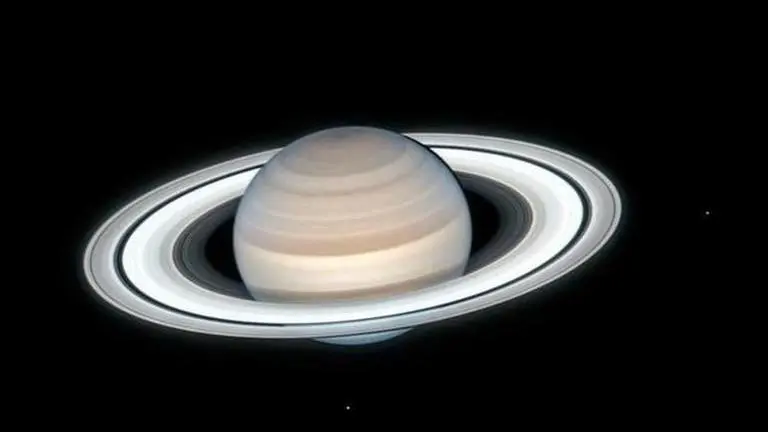Updated 27 September 2020 at 21:45 IST
Researcher develops new chronology for moons of Saturn
A new chronology for the moons of Saturn has been developed by Planetary Science Institute Associate Research Scientist Samuel W. Bell.
- Science News
- 3 min read

A new chronology for the moons of Saturn has been developed by Planetary Science Institute Associate Research Scientist Samuel W. Bell.
In his recent study published in the Journal of Geophysical Research Planets, Bell says most studies dating surfaces on the Moon or Mars rely on counting how many impact craters have formed and knowing the cratering rate, but on the moons of Saturn, the cratering rate is not known.
"Previous chronologies of the Saturn system have assumed that the craters on the moons of Saturn virtually all came from objects orbiting the Sun," the author of 'Relative Crater Scaling Between the Major Moons of Saturn: Implications for Planetocentric Cratering and the Surface Age of Titan' said.
Bell argues that if the impacts came solely from Sun-orbiting objects, the relative cratering rate would be much higher the closer the moons are to Saturn. However, the crater densities of the oldest surfaces of Mimas, Tethys, Dione, Rhea, and Iapetus are all relatively similar, he observes.
"It would be too much of a coincidence for the ages of the oldest surfaces on each moon to vary by the exact amounts necessary to produce broadly similar crater densities. As a result, it seems much likelier that the impactors actually come from objects orbiting Saturn itself, moonlets that would be too small to detect with current technology. There are many important implications of this new chronology," Bell said.
Advertisement
According to him, under the assumption that all the impactors orbit the Sun, the possibility that any of the moons are younger than 4 billion years old is ruled out. However, with impactors orbiting Saturn itself, the moons could be younger, as has been suggested from astrometric observations of tidal orbital evolution.
Advertisement
"The assumption of impactors orbiting the Sun results in the conclusion that the surface of Titan is probably at least 4 billion years old, even though Titan shows clear evidence of active weathering," Bell said. "With the new chronology, Titan could be quite young, which is much more consistent with observations of lakes, riverbeds, dunes, and mountains. "With the new chronology, we can much more accurately quantify what we do and don't know about the ages of the moons and the features on them," he added. "The grand scale history of the Saturn system still hides many mysteries, but it is beginning to come into focus."
Bell's research was done while he was working at Brown University's Center for Computation and Visualization and the Planetary Science Institute.
(Images Credit: NASA)
Published By : Digital Desk
Published On: 27 September 2020 at 21:45 IST

